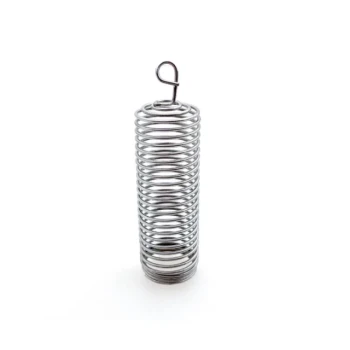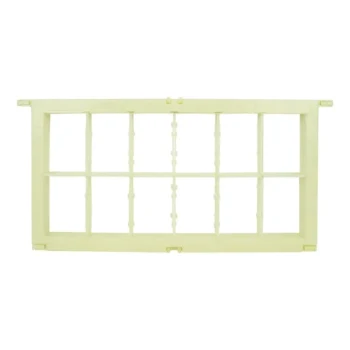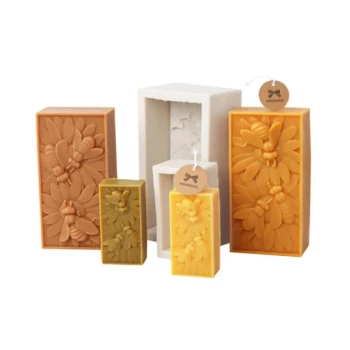The most common method for rearing queen bees involves intentionally creating a queenless state in a strong colony and introducing very young, genetically desirable larvae for the bees to raise as new queens. This process manipulates the colony's natural emergency instincts, allowing the beekeeper to control the genetic makeup of their apiary.
At its core, queen rearing is not about inventing a new process but about skillfully triggering a honey bee colony's natural survival mechanism—the emergency replacement of a lost queen—to produce queens with specific, desirable traits.
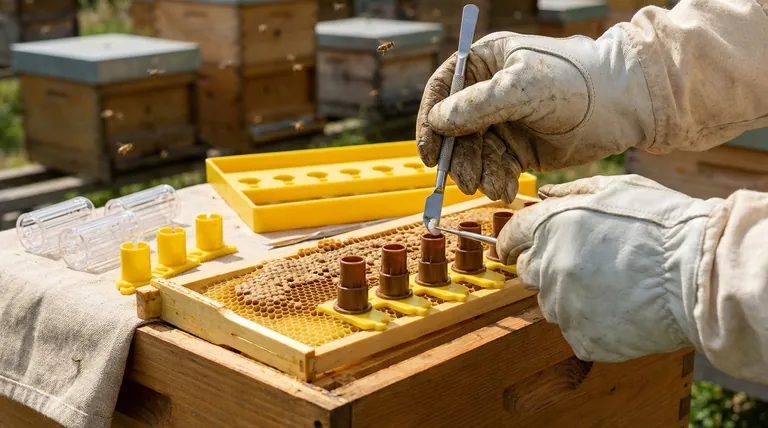
The Principle: Simulating a Queenless Emergency
To understand queen rearing, you must first understand the central role of the queen. Her pheromones are the chemical signals that hold the colony together, assuring the bees of her presence and health.
Why Queenlessness is the Trigger
When a queen is removed or lost, her pheromones disappear. This absence signals a dire emergency to the colony, triggering a specific set of behaviors designed to create a replacement queen as quickly as possible.
The Critical Role of Young Larvae
Worker bees have a very small window of opportunity. They can only turn a female larva into a queen if it is less than three days old. During this period, they can switch its diet to one exclusively of royal jelly.
This special, protein-rich diet is what activates the larva's reproductive development, turning what would have been a worker bee into a queen.
Controlling the Genetic Outcome
By providing the queenless colony with larvae from a specific "breeder queen," the beekeeper dictates the genetics of the next generation. The larvae are selected from a colony that exhibits desired traits like mite resistance, gentleness, or high honey production.
The Core Steps of the Rearing Process
While there are many variations, the fundamental steps of the most common methods, like grafting, remain consistent. The process centers on preparing a powerful "cell builder" colony.
Step 1: Prepare the Cell Builder
A cell builder is a very strong, populous colony made queenless. It is packed with young nurse bees that are primed to produce vast quantities of royal jelly to feed developing larvae.
Step 2: Introduce Selected Larvae
The beekeeper transfers, or "grafts," tiny, day-old larvae from the chosen breeder colony into artificial wax or plastic queen cups. This is a delicate process requiring a steady hand and good eyesight.
Step 3: Let the Nurse Bees Work
A frame holding these cups is placed into the queenless cell builder colony. Sensing the emergency and the presence of suitable young larvae, the nurse bees will immediately begin drawing out the queen cells and feeding the larvae a rich diet of royal jelly.
Step 4: Maturation and Use
Over the next 10-12 days, the bees will feed the larvae, cap the cells, and the larvae will pupate. Once the queen cells are capped and mature, they can be carefully moved to mating hives or introduced into other colonies that need a new queen.
Understanding the Trade-offs
Queen rearing is a powerful technique, but it requires an understanding of the potential challenges and limitations. It is an advanced skill that builds upon a solid foundation of beekeeping knowledge.
The Risk of a Queenless Period
Making a colony queenless, even for a short time, stops all egg-laying. This creates a break in the brood cycle, which can temporarily weaken the colony if not managed properly.
Colony Strength is Non-Negotiable
Only strong, healthy, and well-fed colonies can raise high-quality queens. Attempting to rear queens from a weak or struggling colony will result in poorly developed queens who are unlikely to perform well.
It Magnifies, Not Fixes, Problems
Queen rearing from your best stock amplifies good traits. However, it does not fix underlying issues like disease, high pest loads, or poor nutrition within the apiary. Foundational beekeeping practices are still paramount.
How to Apply This to Your Project
Your goals will determine how you approach and utilize queen rearing in your own apiary.
- If your primary focus is improving genetics: Be extremely selective about your breeder queen and focus on raising a small number of high-quality queens rather than a large quantity.
- If your primary focus is apiary expansion: Use this method to efficiently produce the queens needed to make numerous splits or establish new colonies from your strongest stock.
- If you are a hobbyist looking to become self-sufficient: Master the process with one or two cell builder colonies to ensure you always have replacement queens on hand without relying on purchasing them.
By mastering this process, you take direct control over the health, temperament, and productivity of your bees.
Summary Table:
| Key Aspect | Description |
|---|---|
| Core Principle | Triggers the colony's natural emergency response to a lost queen. |
| Primary Method | Grafting young larvae (<3 days old) from a breeder queen into a queenless 'cell builder' colony. |
| Main Goal | To control the genetic traits (e.g., mite resistance, gentleness) of new queens. |
| Key Requirement | A strong, healthy colony with abundant young nurse bees to produce royal jelly. |
| Time to Maturity | Approximately 10-12 days from grafted larva to a capped queen cell ready for use. |
Ready to take control of your apiary's genetics and productivity?
At HONESTBEE, we supply the high-quality beekeeping supplies and equipment that commercial apiaries and distributors rely on for successful queen rearing and colony management. From durable grafting tools to robust hive components, our wholesale-focused operations ensure you have the reliable gear needed to master this advanced technique.
Let us help you build a stronger, more productive operation. Contact our expert team today to discuss your specific needs and explore our product solutions.
Visual Guide
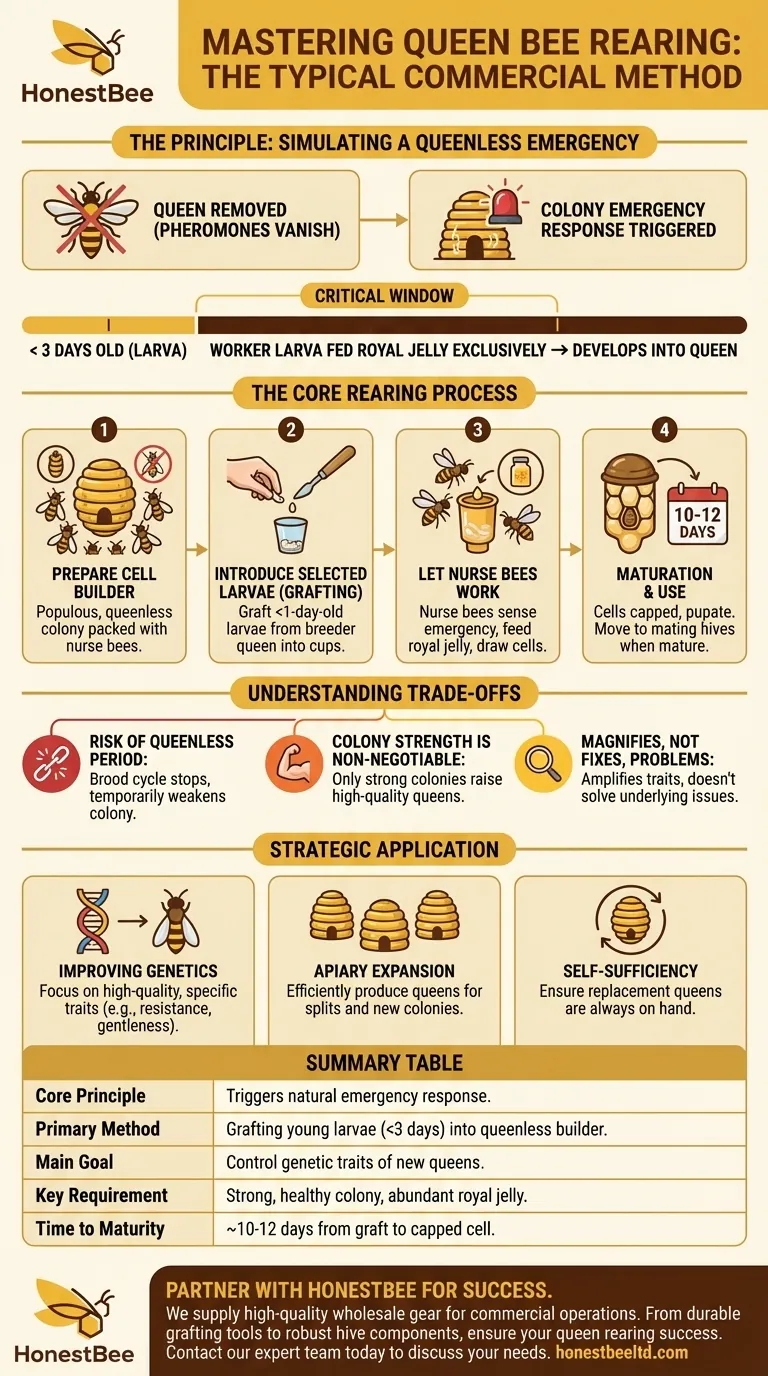
Related Products
- Jenter Queen Rearing Kit Complete Set for Bee Breeding
- No Grafting Queen Rearing Kit: System for Royal Jelly Production and Queen Rearing
- Nicot Queen Rearing Kit for Beekeeping and Grafting in Nicot System
- JZBZ Langstroth Queen Rearing Frame for Beekeeping
- Durable Galvanized Steel Spring Queen Bee Cage
People Also Ask
- How can beekeepers start a honey bee breeding program? Build a Superior, Resilient Apiary
- What are the stages involved in queen raising? A Guide to Controlled, High-Quality Queen Production
- What were the size differences among queens reared from worker larvae? Maternal Origin Determines Queen Size
- What is queen rearing in beekeeping? Take Control of Your Apiary's Genetics
- How long does it take for a new queen to emerge, mate, and lay eggs? A Beekeeper's 10-14 Day Guide




